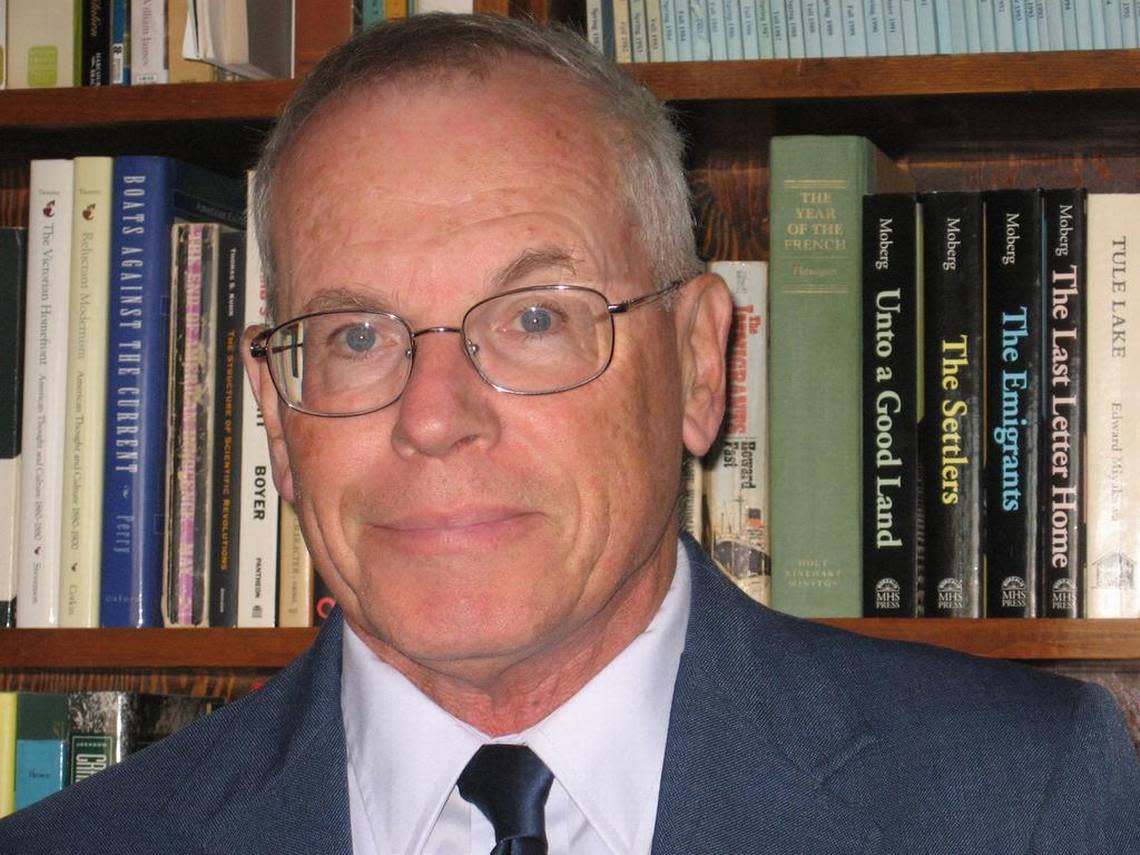A visit to an Austrian concentration camp brings uncomfortable questions for Americans | Opinion
Last month my wife, younger daughter, and myself took a cruise, delayed three years by COVID, down the Danube River. One of our stops was at Linz, Austria, near the birthplace of Adolf Hitler. After his peaceful annexation of Austria in 1938, Der Fuhrer intended to retire in the area, close by a museum which he intended as a celebration of himself. That never happened, of course, but, about 12 miles east of Linz, at Mauthausen, Hitler did construct a concentration camp which in its seven years of existence held about 200,000 prisoners.
In the beginning the inmates were mostly social deviants, forced to do mind and soul-killing hard labor. All too soon dissidents, or those the Nazis deemed a political threat, became the camp’s majority. Only in the last years of World War II did Jews make up a substantial portion of the prison population, as the Red Army advancing from the East, forced the Germans to remove their Jewish internees from Polish camps.
Whatever the prisoner category, hard labor at Mauthausen meant being stripped, in every way possible, of one’s humanity. Our guide showed us three photos taken of the same group of prisoners: the day they arrived, after several weeks, and three months later. The physical decline of the men that the photos marked was beyond shocking. He showed us another photo depicting the labor that had caused such change. The photo displayed a large group of prisoners, in orderly lines, each with an enormous rock on his back, as they labored up the miles’ long steep incline from the quarry to the hilltop camp. The photo was designed to showcase human beasts of burden, indeed worse than beasts. Our guide pointed out that the Germans referred to them as vermin, something that deserved to be eliminated by whatever maltreatment they could devise. That allusion rang a bell in me. I wondered who else might have heard it.
Toward the end of the war, as Jews made up most of the camp, elimination, through the gas chamber, became the end step of the dehumanization program. All in all, about half of those 200,000 imprisoned at Mauthausen became victims of the lethal labor or the gas chamber.
Our guide, a male in his forties, is a native of Mauthausen. He has been doing this grim docent’s work for two decades. He forthrightly spoke of the warm relations that had developed between the camp’s guards and the townspeople, at least many of them. Given the enthusiastic reception that so many Austrians had given the German troops when they marched into Vienna in 1938, welcoming Hitler as the one who would restore the imperial glory that Austria had known before 1914, that behavior should not surprise. We know the powerful pull that such revanchist promises can have upon those yearning for them.
Our guide made no judgment about his municipal ancestors’ collaboration with the camp guards who had been involved in such unspeakable deeds. But his very persistence as a guide to such a repulsive place as the Mauthausen camp more than hinted that he saw his role as providing some shred of atonement for the sins of his town’s fathers and mothers.
I thought of asking him whether he felt a certain urgency, when addressing Americans, to portray Mauthausen as a cautionary tale to how easily people can be swept up in authoritarian movements. How they can get to a point where they choose to ignore or, even worse, rationalize terrible things, like separating children from their parents or attempting an insurrection. But then I realized that for anyone with the moral strength to acknowledge the darkest chapter of his town’s past, and to educate visitors about it, such a question need not be asked.

Robert Emmett Curran is a Professor of History Emeritus at Georgetown University who lives in Richmond.
